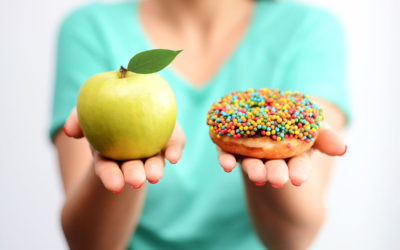So here we are in 2019, a brand new year, full of new potential and possibilities; our new year resolutions manifesting in a desire to becoming a healthier, better version of ourselves. For many, the commitment to ‘dry January’ or ‘no sugar for a month’ is a common goal, in the hope of bringing back the balance that was tipped (and thoroughly enjoyed!) over the festive season.
New year, new you?
I am in full support of anyone striving to better their health and well-being in which ever way works for them. It takes determination to truly make a change, no matter how small it may seem. But why put in all that work through January, just to get to February to find your way back to the biscuit tin or that glass of wine (or two) at night? I believe the real answer to the balance we are all searching for – post over-indulgence – is in our blood. Balance your blood sugar and you can lose weight, sleep better and even reverse Type 2 Diabetes. Committing to making mindful and significant changes to our eating and drinking habits that lasts all year is a really nice way of following on from a month of total abstinence or even a justified replacement.
The challenge of blood sugar balance
When our blood sugar is out of balance (ie spiking too high then dropping too low, leaving us craving ‘a pick me up’), we can feel tired, unable to sleep, anxious, irritable, have low mood and gain weight. Prolonged blood sugar fluctuation for continued periods of time can push someone who has pre-diabetes into a full-blown diabetic state.
For many of those living in residential or nursing care ‘dry Jan’ holds little to no meaning what-so-ever. And why should it? Even so, the same principles still apply when it comes to blood sugar fluctuation and balance.
Agitation, tiredness, low mood, broken sleep or an inability to settle at night could all be indications that someone needs a few adjustments.
Balance is better
Refined carbohydrates, alcohol and caffeine are all key factors that mess with our blood sugar. The glucose enters quickly into the blood where the pancreas must then release insulin to help the glucose into the cells. Caffeine from tea and coffee encourage the release of cortisol from the adrenal glands, causing a release of insulin and interfering with how it is used.
What can we do to balance blood sugar?
If you feel as though some adjustments could help with someone’s mood or sleep pattern, then try the following tweaks to help:
Fibre
Adding fibre into a meal or snack will act as a buffer and slow the release of glucose into the system.
Protein
Protein also buffers the release of glucose and makes the release time much slower, thus keeping energy levels stable. Make sure protein is offered with every meal and snack. Protein comes in many forms such as nuts, beans, lentils, some vegetables, eggs, natural yoghurt, hemp seeds and good quality protein powder.
If someone is waking up in the night and not able to settle, offer a protein-rich snack before bedtime. This will reduce the release of adrenaline in the night if blood sugar drops. The body can use the energy from the food eaten to stay settled and be less likely to wake in the night.
Go decaf
There are so many caffeine-free hot drinks available now. If tea or coffee is a favourite, then why not try a decaf? Especially for those who are having trouble settling at night, make sure that caffeine drinks are stopped after around 2-3 pm and decaf tea or coffee is given as an alternative.
Less sugar
If baking cakes or biscuits, use much less sugar than usual or better still, a natural sugar alternative such as bananas, stevia, agave or date syrup. Make no mistake, these are still sugars and will still affect your blood sugar, but they are less likely to cause as much of a spike, especially if you become a whiz at sneaking in fibre and or protein to your homemade treats – a challenge for you home bakers out there! You will find that cakes and biscuits still taste as good with natural and very little sugar in them. There are many recipes available for low GL sweet and savoury snacks.
Exercise
Any movement is good movement. If you are a carer, then be mindful of encouraging the person(s) in your care to move. If they are able to walk, then ask them to take a short walk up the hall and back a few times a day, or if they can manage more then make it possible. Exercise helps cells in your muscles to take up glucose, helping with energy and tissue repair, therefore lowering the blood sugar.
Here’s to a mindful and healthful year ahead!


